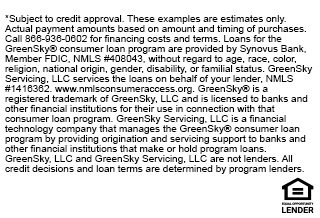How to Clean Your Heating Ducts
A Step-by-Step Guide to Cleaning Your Heating Ductwork
It’s that time of year again – the leaves are changing color, the mornings are becoming crisp, and soon your heating systems will be kicking in for the first time. Are they ready?
Your heating ducts can quickly become a source of allergens when dust and pet dander settle into their crevices. When your heat turns on for the first time, it will send all of these particles into your living spaces, affecting your indoor air quality. Regular HVAC maintenance, including duct cleaning, can help keep your air fresh and your systems running efficiently.
Let’s take a closer look at how to clean your heating ducts, and when you should call a professional HVAC company.
The Importance of Cleaning Your Heating Ducts
Did you know that cleaning your ductwork can help you save money on your heating bills? When your heating ducts are clean, air moves through them more efficiently, pushing heat into your living spaces and decreasing the load on your furnace. When your heating system is not working as hard, you can increase its lifespan and reduce the need for HVAC service or repair.
When cleaning your heat ducts, you have two options – hiring a professional to tackle the job for you or trying to clean them yourself. In most cases, a professional will eliminate the hassle and stress of a DIY approach while performing a more thorough job with specialized equipment. However, if you’re trying to save money, you can clean your ductwork by following some simple steps.
How to Clean Your Heating Ducts
Before you can begin the cleaning process, you’ll need to gather several materials, including:
- A Heavy-Duty Vacuum, Such as a Shop Vac
- Screwdriver
- A Broom
- A Stiff Bristle Brush
Once you have the correct supplies, you can start cleaning, using the following procedure as a guide:
- Turn off the power source connected to your heating and cooling system (NOTE: If you are unsure of how to do this step, it’s best to leave the job to an HVAC company).
- Using your screwdriver, unscrew the air duct covers from your floors or walls. Clean the grates thoroughly with your stiff bristle brush. If the grime or dust persists, soak the grates in warm soapy water.
- Using your shop vac, remove as much dirt as possible from the duct. A heavy-duty vacuum with a long hose is essential for reaching the crevices of your ductwork.
- Use your broom to clean all of the grilles in your ceiling. If they are very dusty or have not been cleaned in a while, protect yourself from allergens by using a dust mask.
While it’s possible to clean your ducts on your own, it’s best to seek help from a team of professional HVAC contractors. That way, you can ensure that your ductwork is cleaned thoroughly, and any existing HVAC issues are addressed.
Contact Smith & Company HVAC for Central Heating Repair Services
If your HVAC system isn’t operating at its best, it may be time to schedule residential HVAC repair. Smith & Company HVAC proudly provides the best residential HVAC services in Pasadena, MD, Crownsville, MD, and the surrounding areas.
Call Smith & Company HVAC for trusted professional HVAC repair services at 410-874-0766.
TAGGED: BEST RESIDENTIAL HVACCENTRAL HEATING REPAIRHEATING REPAIR SERVICEHVAC COMPANYHVAC CONTRACTORSHVAC MAINTENANCEHVAC SERVICEHVAC SERVICE REPAIRRESIDENTIAL HVAC REPAIRSMITH & COMPANY HVAC
Request A Quote Today
We will get back to you as soon as possible
Please try again later
GreenSky® Credit Program Finance Module Usage Guidelines
By using the GreenSky® Credit Program Finance Module product, you(the merchant and/or merchant’s assignees) agree to follow the below conditions during implementation:
1) Do not alter the embed code created using this tool in ANY way — Should GreenSky’s branding, compliance language or plan terms change, GreenSky® retains the ability to update imagery in the module remotely.
2) Module should not be placed in proximity to any content or imagery that may be damaging to GreenSky, LLC or the GreenSky® Program brand — The GreenSky® Program Finance Module should not be implemented on any page or site that may, by association or otherwise, result in damage to GSTC or the GreenSky® Program brand.
3) Merchant agrees to adhere to the GreenSky® Program Merchant Marketing Guidelines to ensure ethical and best practices are followed.






